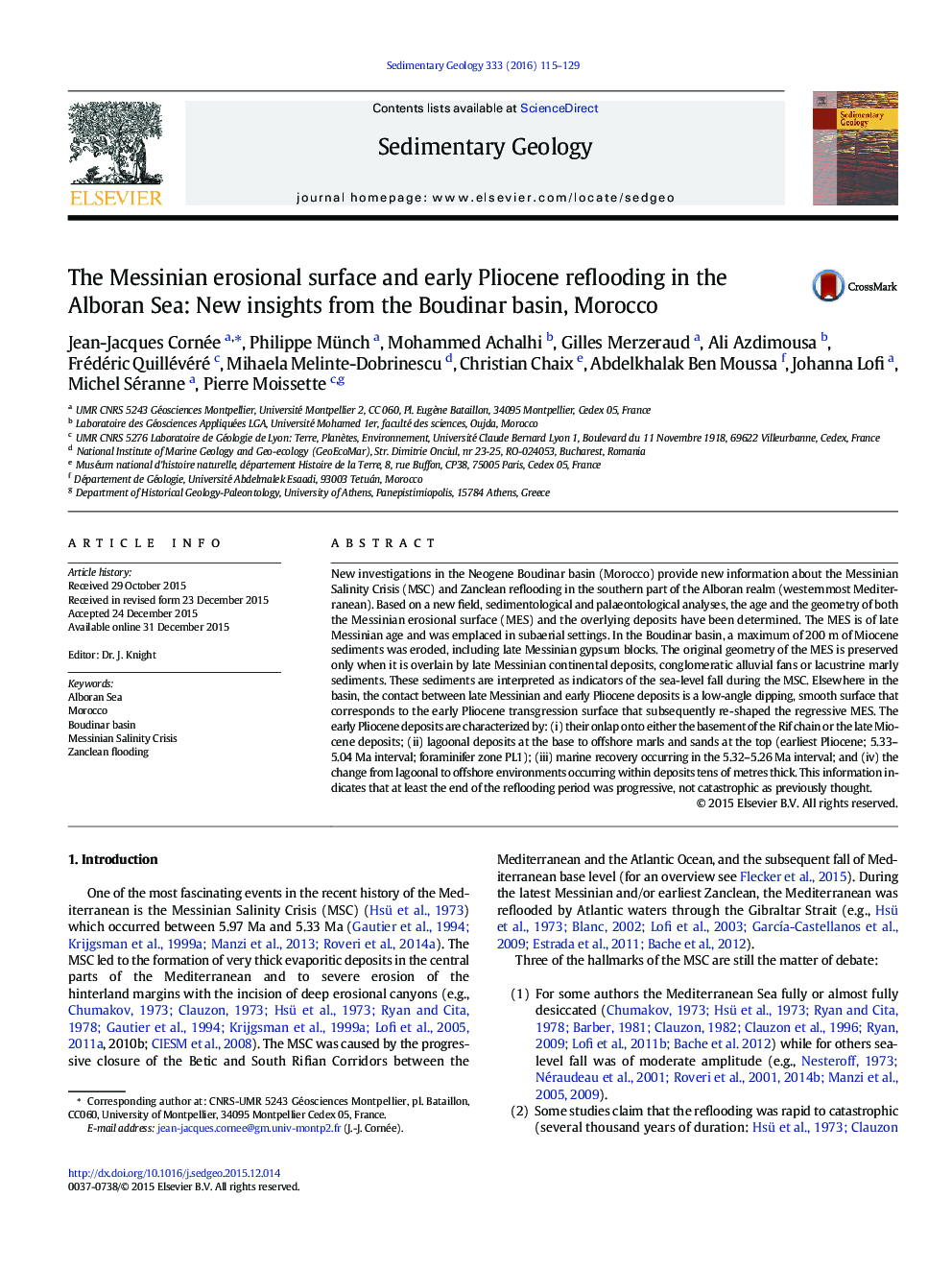| Article ID | Journal | Published Year | Pages | File Type |
|---|---|---|---|---|
| 4689124 | Sedimentary Geology | 2016 | 15 Pages |
•Late Messinian gypsum was deposited and reworked during the MSC.•The Messinian Erosional surface (MES) is a low angle polygenic surface. Erosion is 200 m at maximum.•The MES and overlying late Messinian continental deposits are contemporaneous with the MSC.•The post MSC marine flooding occurred in the earliest Pliocene (5.32–5.26 Ma) and was progressive.•The South Alboran Basin may have been an intermediate basin during the MSC.
New investigations in the Neogene Boudinar basin (Morocco) provide new information about the Messinian Salinity Crisis (MSC) and Zanclean reflooding in the southern part of the Alboran realm (westernmost Mediterranean). Based on a new field, sedimentological and palaeontological analyses, the age and the geometry of both the Messinian erosional surface (MES) and the overlying deposits have been determined. The MES is of late Messinian age and was emplaced in subaerial settings. In the Boudinar basin, a maximum of 200 m of Miocene sediments was eroded, including late Messinian gypsum blocks. The original geometry of the MES is preserved only when it is overlain by late Messinian continental deposits, conglomeratic alluvial fans or lacustrine marly sediments. These sediments are interpreted as indicators of the sea-level fall during the MSC. Elsewhere in the basin, the contact between late Messinian and early Pliocene deposits is a low-angle dipping, smooth surface that corresponds to the early Pliocene transgression surface that subsequently re-shaped the regressive MES. The early Pliocene deposits are characterized by: (i) their onlap onto either the basement of the Rif chain or the late Miocene deposits; (ii) lagoonal deposits at the base to offshore marls and sands at the top (earliest Pliocene; 5.33–5.04 Ma interval; foraminifer zone PL1); (iii) marine recovery occurring in the 5.32–5.26 Ma interval; and (iv) the change from lagoonal to offshore environments occurring within deposits tens of metres thick. This information indicates that at least the end of the reflooding period was progressive, not catastrophic as previously thought.
